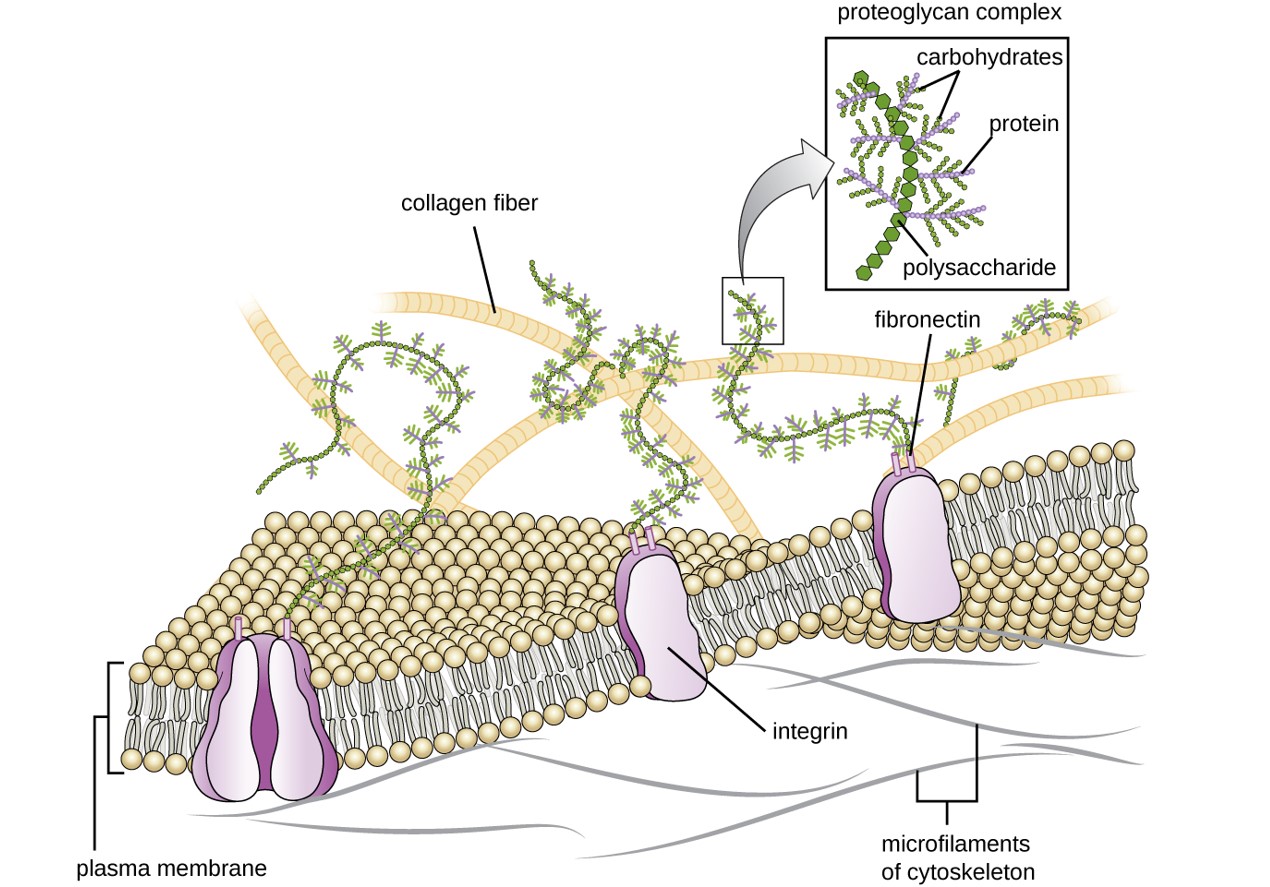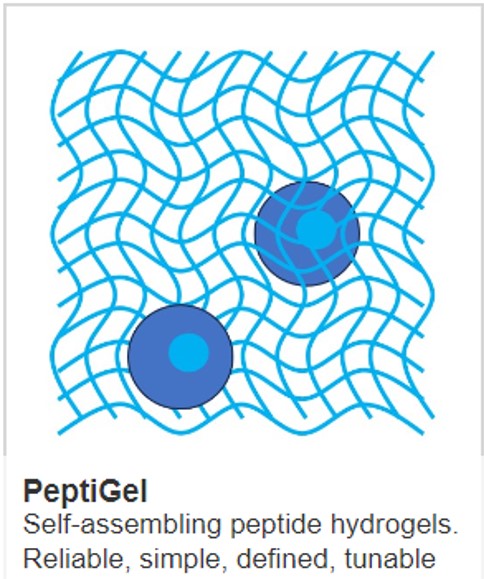The importance of hydrogel functionalisation

Changes in the composition and components of the extracellular matrix (ECM) can influence cell behaviour. As well as structural proteins, the ECM contains functional proteins which bind to cells and modulate their behaviour. These functional components of hydrogels are critical to consider when it comes to 3D cell culture.
ECM Composition
The ECM is composed of multiple matrix proteins that provide the necessary support to cells and tissues. These proteins tend to be categorised as either structural or non-structural depending on what their function is. Structural proteins are proteins such as collagen and elastin with matrix proteins such as fibronectin and laminin considered non-structural proteins.
Collagen is actually the most abundant protein found within the human body and is used to provide tensile strength within the ECM as well as having a role to play in other cell processes such as cell adhesion and cell migration. Collagen type 1 is often used as a coating on gel scaffolds as it can promote cell adhesion as well as stimulate the myogenic and osteogenic differentiation of stem cells.
It is also frequently used as a scaffold material for cells within a composite scaffold as a single material as it seldom initiates an inflammatory response from the host.
Fibronectin is located in the basement membrane of the ECM and has been determined to play an important role in both cell adhesion and wound healing in response to injury. Fibronectin is also critical to other in vivo processes such as embryonic development.
The importance of fibronectin means that it has a key role in many tissue engineering applications. Notably, fibronectin’s RGD sequence motif is critical to ensuring cell adhesion as this motif enables cell attachment.
Laminin is another important non-structural matrix protein. Laminin is made up of three different chains which exist in various genetically distinct forms. They reside in the basement membrane of the ECM and have a vital role in several cell processes, such as differentiation and migration via their interaction with integrins. Laminins also have the capacity for cell binding and can be used to enhance cell adhesion in cell culture conditions.
It is important to note that the composition of the ECM varies in different tissues and different disease states. For example, the ECM in connective tissue, such as cartilage, are rich in proteoglycans. THe differing composition of ECMs clearly has an effect on functionality of the tissue so tailoring hydrogels used to support cells in-vitro is important to model in-vivo reality.
Many of the animal-derived scaffolds available on the market have an undefined amount of collagen, fibronectin and laminin which makes it difficult to determine what the cells actually need to thrive, and which of them (or other proteins) is actually interacting with the cells.
PeptiGels® available from Cell Guidance Systems, however, are:
- Animal free
- Biocompatible
- Biodegradable
- Chemically defined
- Ready to use
- Reproducible
- Transparent
With PeptiGels® you can study the impact of the functionality of individual proteins and motifs independently from one another to create a fully defined, bespoke scaffolds with functionalities required for a particular cell type. In simple terms, you can study collagen on its own, fibronectin on its own and laminin on its own within the PeptiGel® scaffold.
PeptiGels® can be used for both 2D and 3D cell culture and their biochemical cues, charge and stiffness can all be controlled independently to replicate cellular environments to those of any human tissue.
To try our PeptiGel® Functional Kits and discover the ideal in vivo-like functionality for your cell needs, please get in touch with our friendly, knowledgeable team. We’re ready to support your research.
IMAGE: extracellular matrix in connective tissue (e.g. cartilage) containing proteoglycans CREDIT: CNXOpenstax
Learn more about powerful technologies that are enabling research:



